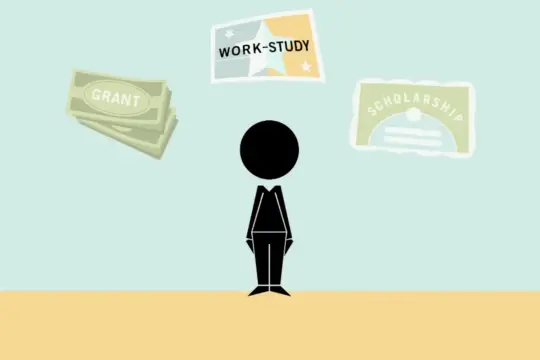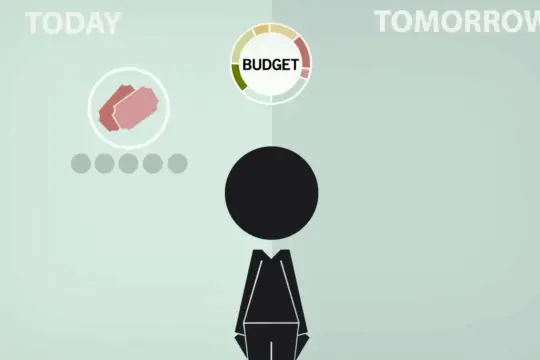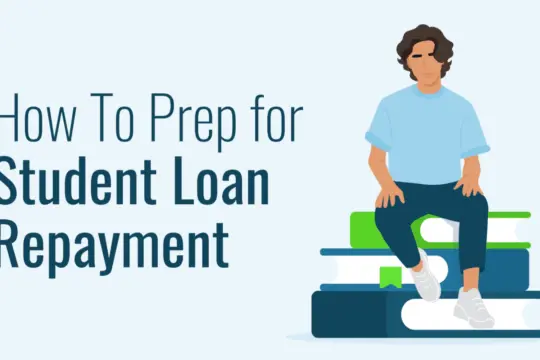Loans & Financing
Financial Guidance That Moves You Forward
Understanding the financial aspects of higher education is crucial for a successful academic journey.
At Susquehanna University, we are committed to empowering students and their families with the knowledge and resources needed to make informed financial decisions. Our Student Financial Services team offers personalized guidance on various financing options, including federal and private loans, scholarships, grants, and work-study opportunities.
By utilizing these tools and support systems, students can confidently navigate the financial aspects of their education and focus on achieving their academic goals.
Loan Education & Information
Private Loans
A variety of private education loans are available to Susquehanna students, although we advise you to pursue federal education loans first since they carry lower interest rates that may be tax-deductible.
For families who wish to borrow through a private loan program, our staff is available to sort through the options and evaluate which loan may make sense for a particular situation.
Click here to access our private loan preferred lender list.
Private loans exist for both student and parent borrowers with most lenders offering both fixed and variable interest rates. The below outline is provided to help guide your process of securing a private/alternative education loan. We encourage you to consider all gap financing options before making a decision that meets the needs the needs of your family.
Be sure that you have first secured the maximum amount possible from the Federal Direct Loans. If you still need additional financing:
- Apply online for the loan you have chosen.
- Complete the self-certification form and submit it to your lender. (Most lenders will provide the form within the loan application.)
- Susquehanna University will be notified by the lender of the decision to approve or disapprove your loan. (Approvals are credit-based.)
- If approved by the lender Susquehanna University will certify the loan amount for which you qualify. The lender will send you an approval disclosure, which you must respond to before the loan can be released to your student account.
- A final (third) disclosure will be sent to you and you will have three business days to rescind (cancel) the loan
Please note that this process may take up to five weeks to complete. Apply early in order to receive your loan funds at the start of the semester.
For information and/or application materials, please contact Student Financial Services.
Click here to view our list of preferred lenders
We have developed a preferred list of private loan lenders based on a survey sent to 15 lenders who have been actively lending within Pennsylvania for at least five years.
Interest rates and fees for private loans vary from lender to lender based on the credit of the individual borrower and cosigner. We recommend that you apply for one or more private loans before deciding which type of loan is best for you. Applying for a private student loan does not obligate you to accept it.
We evaluated lenders based on pricing, technology and customer service, as well as our experience with these lenders. A committee reviewed the data and developed the list of lenders, which is evaluated and updated annually.
Our suggested lenders
- Have a history of excellent customer service in dealing with our students and families
- Offer benefits, such as interest rate reduction for auto-debit
- Offer “value-added” services to students such as debt management tools and programs, useful websites and default prevention programs
- Have not offered financial benefits or other benefits to Susquehanna in exchange for being included on the preferred lender list
- Have not offered, directly or indirectly, points, premiums, payments, or other inducements, to Susquehanna or any party to secure applicants for loans
- Will not offer a loan to induce other products and services to the borrower
You are not required to select a lender from our preferred lender list. If you select a different lender, call Student Financial Services at 570-372-4450.
Lenders and schools will provide a self-certification form as part of the application process for a private student loan. The loan application will not be complete until all forms and disclosures are signed by the borrower and co-borrower.
Student Loan Guide for Borrowers
Nearing the time to start paying back your student loans?
First, make sure you have copies of the disclosure statements and promissory notes for all your loans so that you know:
- The amount that you borrowed
- The name, address and phone number for your lenders or loan servicers
- The loan terms (interest rate, length of repayment, grace period, repayment options, etc.)
- An estimate of your monthly payments
This information is available from several sources including Susquehanna’s Financial Aid Office, your lenders, and the National Student Loan Data System (NSLDS). NSLDS is the U.S. Department of Education’s central database for student aid.
One to two months prior to the end of the grace period, you can expect to receive statements from your lenders indicating your outstanding balance and actual monthly payments.
For more helpful information regarding the repayment of student debt, please visit the Consumer Financial Protection Bureau site.
Get information on deferment, forbearance, repayment plan options and loan consolidation.
Students who borrowed loans through the Federal Direct Loan Program while at Susquehanna are required to complete exit counseling.
The exit counseling session is an opportunity to learn about the repayment terms that apply to your federal loans. Prior to graduation, students will be asked to log in using their FSA ID and Password to studentloans.gov to complete an online exit counseling session.
You need to complete exit counseling before you withdraw, graduate or drop below half-time attendance (even if you plan to transfer to another school).
Why Do I Need to Complete Exit Counseling?
- It helps you understand your rights and responsibilities as a student loan borrower.
- It provides useful tips and information to help you manage your loans.
Federal Direct Loans enter their grace period six months after you graduate or six months after your leave of absence or withdrawal from the university becomes effective. During the grace period, the in-school loan terms continue:
- No payments are required.
- Direct Subsidized Loans disbursed prior to July 1, 2012, will not be eligible for an interest subsidy during the six-month grace period.
- Direct Subsidized Loans disbursed as of July 1, 2012-July 1, 2014, will be impacted by a new provision that eliminates the interest subsidy during the six-month grace period for subsidized loans. If you received a subsidized loan during this timeframe, you will be responsible for the interest that accrues while the loan is in the grace period. No payment is required during the grace period (unless by choice) but the interest will be added (capitalized) to the principal amount of the loan when the grace period ends. This provision does not eliminate the interest subsidy while the borrower is in school or during eligible periods of deferment.
- Interest accrues on the Direct Unsubsidized Loans.
The grace period is only granted once for each loan. If you borrowed student loans for your undergraduate program or another graduate program, and you were out of school for more than six months before beginning school, you will not receive a second grace period for these loans.
Any unpaid, accrued interest on your unsubsidized loans is capitalized and added to your principal balance at the end of the grace period. This will result in a higher starting principal balance.
Paying the interest on your unsubsidized and private loans before it is capitalized will reduce the total amount you will repay, since interest will accrue on a smaller balance.
Direct Loans offer five repayment:
- Standard—Equal monthly payments over 10 years
- Extended—Repayment term extends up to 25 years; fixed or graduated payments
- Graduated—Payments start lower and increase over 10 years
- Income Contingent—Monthly payment is 20 percent of discretionary income OR amount you would pay with a fixed payment over 12 years (whichever is lower), adjusted according to income
- Income Based—Monthly payment will be 10 or 15 percent of discretionary income
- Pay As You Earn / Revised Pay As You Earn—Monthly payment amount is up to 10 percent of discretionary income
All except standard are designed to reduce your monthly payments. Because you will usually be repaying the loans over a longer repayment term, they will accrue additional interest and the total amount repaid will be higher than under the standard plan.
You may:
- Prepay any amount at any time without a penalty under any payment plan
- Make additional payments on a monthly basis or periodically
Any payment more than the standard monthly payment will be applied first to any outstanding interest balance and then to principal.
Repayment Companies
The Department of Education has hired several companies to collect payments and process deferments. The servicer oversees the status of a loan, distributes funds, collects payments and handles deferments, forbearances and other related issues. A significant amount of Susquehanna student loans are serviced by the following:
- Aidvantage, 1-800-722-1300, aidvantage.com
- Edfinancial, 1-855-337-6884, edfinancial.com
- ECSI, 1-866-313-3797, efpls.ed.gov
- Great Lakes Educational Loan Services, Inc., 1-800-236-4300, mygreatlakes.org
- Mohela, 1-888-866-4352, mohela.com
- Nelnet, 1-888-486-4722, nelnet.com
- OSLA Servicing, 1-866-264-9762, public.osla.org
If you are temporarily unable to make your loan payments, you may request deferment or forbearance to suspend or reduce your monthly loan payments for a short period of time.
They may be used for a variety of situations, such as:
- Interruptions in employment
- Delayed employment start dates
- Illness
- To delay payments while setting up a new repayment option
If you are having difficulty making your payments, you must contact your loan servicer immediately. Not only will a deferment or forbearance relieve your financial stress, it will also protect your credit rating by preventing your loans from entering delinquent or default status.
Deferment
This is a period during which payments of principal are postponed. Interest may or may not accrue on the subsidized loan (it depends on if the loan was disbursed after July 1, 2012). Interest is charged on unsubsidized loans and may be paid or allowed to accrue and capitalize.
You must request the deferment and meet specific eligibility criteria, for which documentation will also be requested. Deferments may be granted for cases of unemployment and economic hardship. Deferments are typically granted for six or 12 month periods and may not exceed three years in total.
Forbearance
During forbearance, you may either suspend payments or reduce their scheduled monthly payment amount on a temporary basis.
You must apply for forbearance and may be required to submit supporting documentation. Interest continues to accrue on both the subsidized and unsubsidized loans. Interest is capitalized when the forbearance ends.
This allows you to borrow a new loan to replace your existing federal loans, such as Federal Stafford, Grad PLUS, Perkins and Federal Consolidation Loans. You may also extend your repayment term up to 30 years (for debt greater than $60,000) and secure a fixed interest rate (calculated as a weighted average, rounded up to the nearest 1/8th of a percent).
You should consolidate during your grace period or during repayment. This option will work best for borrowers who have federal loans with multiple lenders, those who need a lower monthly payment and those who are interested in the federal loan forgiveness option for public service.
Please visit studentaid.gov to access consolidation calculators, frequently asked questions and the application to consolidate.
Your loans will be considered to be in delinquent status if your payment is not received by the lender by the payment deadline. Late charges may be assessed and the delinquency may be reported to the credit bureaus. Your loans will be considered in defaulted status if your payment is more than 270 days overdue. The consequences of default may include the following:
- The lender can declare the entire balance of your loans due immediately.
- Your wages can be garnished.
- You will no longer be eligible for a loan deferment.
- The IRS can withhold your income tax refund.
- Your account can be turned over to a collection agency and the government can take legal action against you.
- Collection and litigation costs can be added to your loan balance.
- The default will appear on your credit report for at least seven years.
You can avoid delinquency and default by signing up for electronic debit payment, updating your address promptly if you move and requesting a deferment or forbearance before you miss a payment.
Please visit the Consumer Financial Protection Bureau site for additional guidance.
What You, as a Parent, Can do Now
Plan ahead to ensure you have resources for your student’s education.
Identify the resources in your current family budget that will be available for college costs. You may be able to reallocate expenses such as school lunches, pay-to-play sports and school transportation.
Explore scholarship resources within your community, including employers and local organizations. Develop a student résumé of extracurricular activities, community service and leadership positions.
Utilize the Net Price Calculator on the websites at schools where your child is interested in attending so you have a sense of what you might be expected to pay.
Review any savings plans or college investments to understand how to access these funds and determine how much will be available. Begin or continue to contribute to savings plans.
Help your son or daughter begin good financial habits and learn to manage their money. Help develop independence and responsibility by encouraging your student to balance academic work and activities with a part-time or summer job.
Keep your options open. Consult College Board for potential college matches that meet your student’s interests.
There are four primary means to pay for college:
- Parent contribution from parent income and non-retirement savings, and possibly a parent (PLUS) loan.
- The student’s educational investment from savings, summer earnings, community-based scholarships, campus employment and educational loans.
- Academic merit scholarships and need-based grants that may be provided by the university.
- Federal and state grants for which you qualify.
Evaluating your family’s financial resources for college and learning more about how this all works begins right now. You’ll want to review the cost of schools on your student’s list-but please don’t rule out any college based on cost alone. Many merit-based scholarship and financial aid options are available that dramatically reduce the sticker price and make a particular university more affordable for your family.
Strong academic achievement throughout high school will help your student qualify for academic merit scholarships. Final determination of eligibility for need-based federal and state grants and loans will occur once your family has filed the FAFSA during your student’s senior year of high school.
Responsible Borrowing
Are you thinking about taking out a federal student loan to help pay for college or career school? Check out this video to learn about your responsibilities as a borrower and what you should consider when taking out loans for college.

Budgeting
Taking time to make a budget can help you make smart financial decisions today and reach your goals in the future. Setting up your budget is simple. You just need to take the time to get started.

How to Prepare for Student Loan Repayment
Before beginning your federal student loan repayment journey, you’ll need to know the basics. Learn key terms, federal loan types, who’s who, how you’ll make payments and strategies to consider for repayment.

Quick Links
Power Your Readiness
Have Questions?
Contact Us
Student Financial Services
514 University Ave.
Selinsgrove, Pa. 17870
Location
Student Financial Services Office
Phone & Email
570-372-4450






